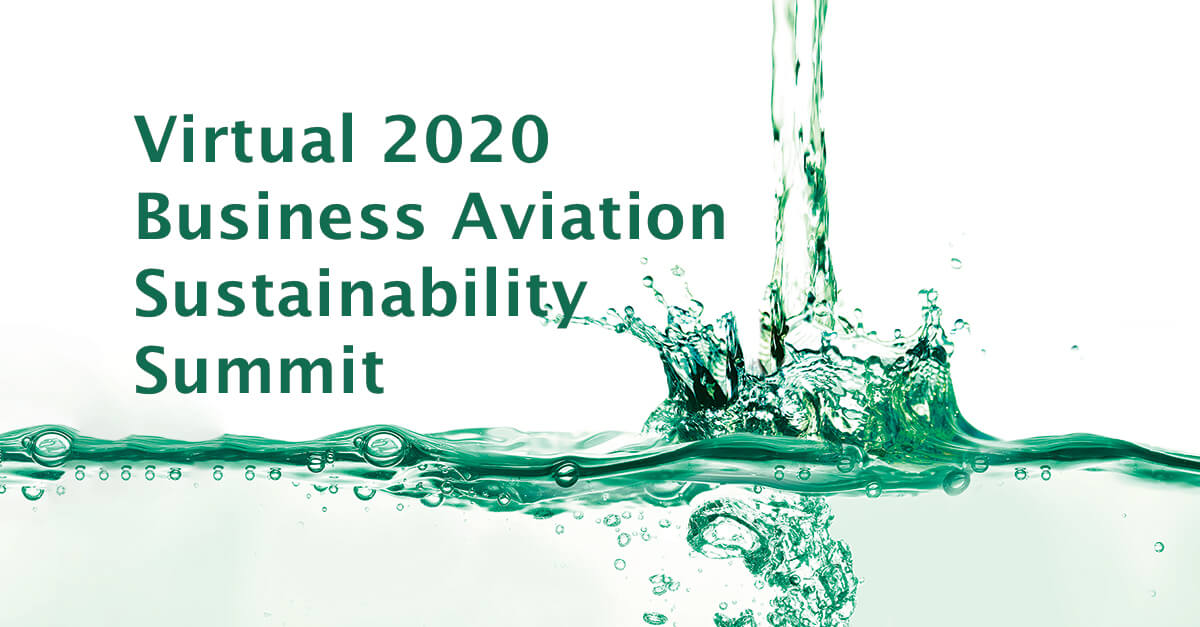
Sept. 14, 2020
New initiatives to promote the use of sustainable aviation fuel (SAF) and improve its availability to operators headlined the first day of the Virtual 2020 Business Aviation Sustainability Summit, which featured perspectives on SAF both from aircraft manufacturers and fuel providers.
Mark Burns, president of Gulfstream Aerospace – a Platinum sponsor of the online summit, along with Bombardier Aviation – announced during the event’s opening session that his company recently extended its contract with World Fuel Services to supply SAF for use across Gulfstream’s flight operations.
“We use SAF on our company flights, we use it on our demonstration flights and we use it in our flight testing of new airplanes,” said Burns. “Reducing our impact on the environment by using SAF is a move we all should consider making [and] creating a sustainable future for aviation is a responsibility we share.”
Signature Aviation COO Tony Lefebvre announced another step forward in improving access to SAF with plans to permanently supply the fuel at the company’s FBOs at San Francisco International Airport (SFO) and London’s Luton Airport (EGGW) through partnerships with Neste Oil and fractional operator NetJets.
“[San Francisco International] will be the first airport in the entire world that will be 100% SAF-supplied and our intent is to do that fairly quickly,” he said. Chris Cooper, Neste’s vice-president for renewable aviation in North America, added this was “a great opportunity to actually convert all of the business aviation segment” at SFO.
While these announcements marked progress toward making SAF more readily available to business aircraft operators, more work remains to be done to ensure greater access to the fuels and educate the industry about its benefits.
Bombardier Aviation President David Coleal, who also serves as chairman of the General Aviation Manufacturers Association (GAMA) Environmental Committee, highlighted the recent publication of the revised SAF guide – Fueling the Future – for industry stakeholders. “It’s a real synthesis of all the work done by all the OEMs on how to use SAF,” he said of the guide, adding its contents have been endorsed by the FAA.
Keith Sawyer, manager of alternative fuels for summit Gold sponsor Avfuel, encouraged flight operations to reach out to their FBOs and fuel providers and express their interest in utilizing SAF to help their companies meet their environmental, social and governance (ESG) goals.
“The really big takeaway is the ability to reduce CO2 emissions at their location [and] eliminate quite a bit of their [carbon] footprint,” he said. “Ultimately, they can incorporate those savings into their sustainability metrics.”
In opening the summit’s first day, NBAA President and CEO Ed Bolen emphasized SAF complements business aviation’s role as an early adopter for many technologies that have improved the efficiency of flight operations, including winglets and other design elements, navigation technologies and propulsion systems.
“We have an opportunity to focus on an exciting breakthrough [in] sustainable aviation fuel that has the potential to reduce emissions by 50% on a gallon-by-gallon basis,” he said. “The airplane does not know the difference between sustainable aviation fuel and regular [Jet-A], but the environment does.”
The summit will conclude Tuesday, Sept. 15 beginning at 10:30 am (EDT) with the presentations “Regulator and Stakeholder Perspectives: Long-Term Solutions” and “Operators’ Overview – I Want My SAF.” Register now for the summit.


 International Business Aviation Council Ltd.
International Business Aviation Council Ltd.